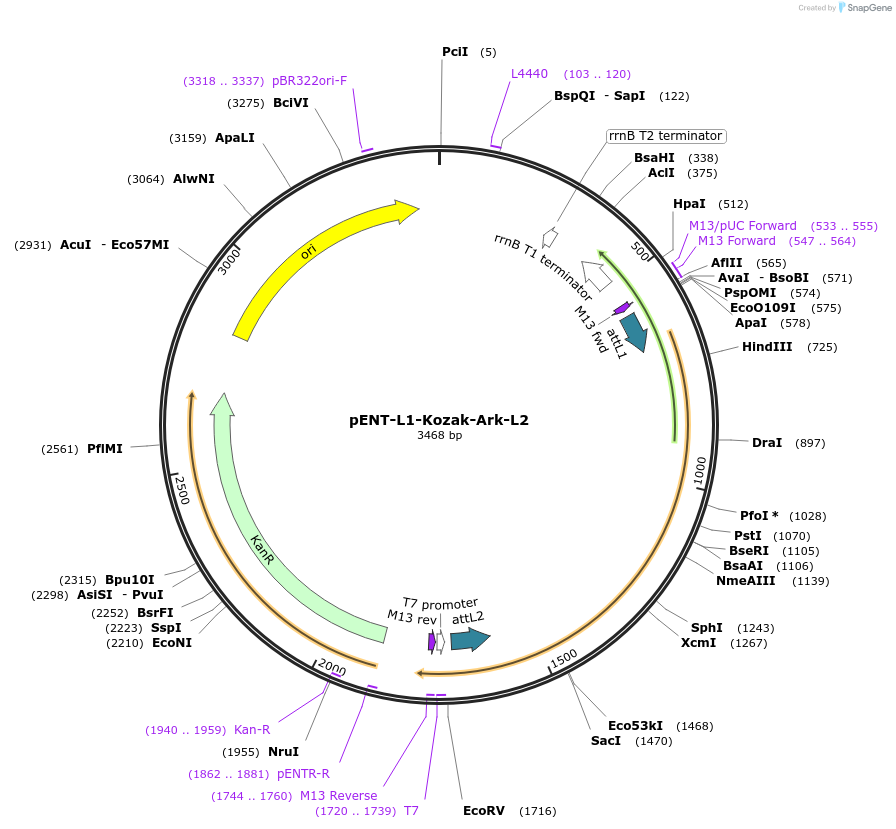pENT-L1-Kozak-Ark-L2
(Plasmid
#186362)
-
PurposeEntry clone with ORF encoding Ciona robusta Aurora kinase A flanked by Gateway recombination sequences. No Stop sequence: to be recombined into a destination vector with a C-terminal protein tag.
-
Depositing Lab
-
Publication
-
Sequence Information
Ordering
| Item | Catalog # | Description | Quantity | Price (USD) | |
|---|---|---|---|---|---|
| Plasmid | 186362 | Standard format: Plasmid sent in bacteria as agar stab | 1 | $89 | |
Backbone
-
Vector backbonePDONR-221 P1-P2
-
Backbone manufacturerPMID: 14736459
- Backbone size w/o insert (bp) 2544
-
Vector typeExpression of a fluorescent centrosome marker
Growth in Bacteria
-
Bacterial Resistance(s)Kanamycin, 50 μg/mL
-
Growth Temperature37°C
-
Growth Strain(s)DH5alpha
-
Copy numberHigh Copy
Gene/Insert
-
Gene/Insert nameCiona robusta Aurora kinase A
-
SpeciesSynthetic; C. robusta (ascidian), formerly Ciona intestinalis type A
-
Insert Size (bp)924
Cloning Information
- Cloning method Gateway Cloning
- 5′ sequencing primer M13forward: TGTAAAACGACGGCCAGT
- 3′ sequencing primer M13rev: caggaaacagctatgac
- (Common Sequencing Primers)
Resource Information
-
A portion of this plasmid was derived from a plasmid made byCiona Aurora kinase A : GC19c04 (Cieg023k05) found in the Ci Gene Collection Release 1 (PMID: 12203911).
Terms and Licenses
-
Academic/Nonprofit Terms
-
Industry Terms
- Not Available to Industry
Trademarks:
- Zeocin® is an InvivoGen trademark.
These plasmids were created by your colleagues. Please acknowledge the Principal Investigator, cite the article in which the plasmids were described, and include Addgene in the Materials and Methods of your future publications.
-
For your Materials & Methods section:
pENT-L1-Kozak-Ark-L2 was a gift from Patrick Lemaire (Addgene plasmid # 186362 ; http://n2t.net/addgene:186362 ; RRID:Addgene_186362) -
For your References section:
A multicassette Gateway vector set for high throughput and comparative analyses in ciona and vertebrate embryos. Roure A, Rothbacher U, Robin F, Kalmar E, Ferone G, Lamy C, Missero C, Mueller F, Lemaire P. PLoS One. 2007. 2(9):e916. 10.1371/journal.pone.0000916 PubMed 17878951



